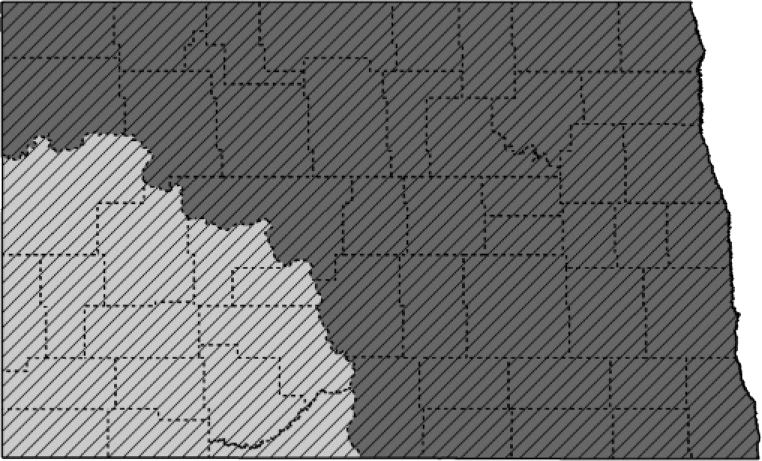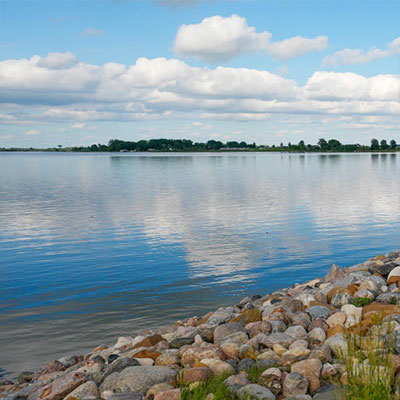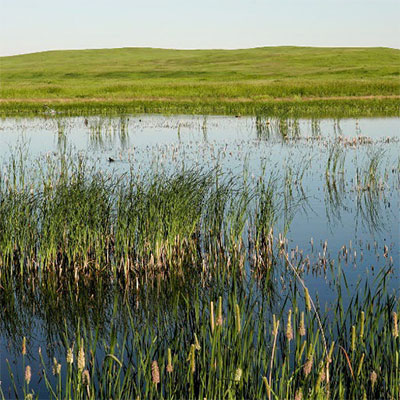Hudsonian Godwit

NDGF
L 15.5”, WS 29”, 11 oz. Breeding/spring plumage: dark rufous belly, dark back, white rump, slightly upturned orange bill. Fall/nonbreeding plumage: plain gray.
Status in North Dakota
Migrates through North Dakota in mid-April through early June, and late July through early September.
Reason for SWAP Designation
Regionally or globally imperiled, at-risk based on expert review (SGCN a., c.).
The peak week for Hudsonian Godwit migration in ND (~17-May) hosts >15% (15.29) of the global population.
Small population, limited breeding and nonbreeding range.
The Hudsonian Godwit is declining precipitously.
Threats
Loss and degradation of wetlands, drainage and wetland consolidation.
Loss of habitat on the breeding and wintering grounds and amplified effects of climate change in arctic and coastal habitats.
Loss and degradation of migratory stopover habitat and impacts of human activity at important stopover areas.
Increasing applications of agrochemicals and adverse impacts to water quality, the wetland vegetative community, and the aquatic invertebrate community.
Hudsonian Godwits may be exposed to high concentrations of synthetic insecticides in non-buffered cropland ponds during the spring migration.
More frequent or intense harmful algal blooms.
Aquatic nuisance species spreading and damaging wetland ecosystems.
Collisions with overhead lines.
Research and Monitoring
Habitat requirements and demographic studies have been researched on the breeding grounds.
Some recent GPS tracking work on migration strategies, stopover sites, and wintering behaviors.
Multiple large-scale shorebird monitoring programs are key sources of information on distribution and population trends.
However, minimal focus has been directed at research or monitoring migrant shorebirds in ND.
Management Recommendations
- Maintain wetland complexes.
- Conserve shallow, working wetlands in cropland.
- Plant vegetative buffer strips around wetlands in cropland.
- Identify and target high priority landscapes, habitats, and stopover sites for protection.
- Conscientious and appropriate application of agrochemicals.




